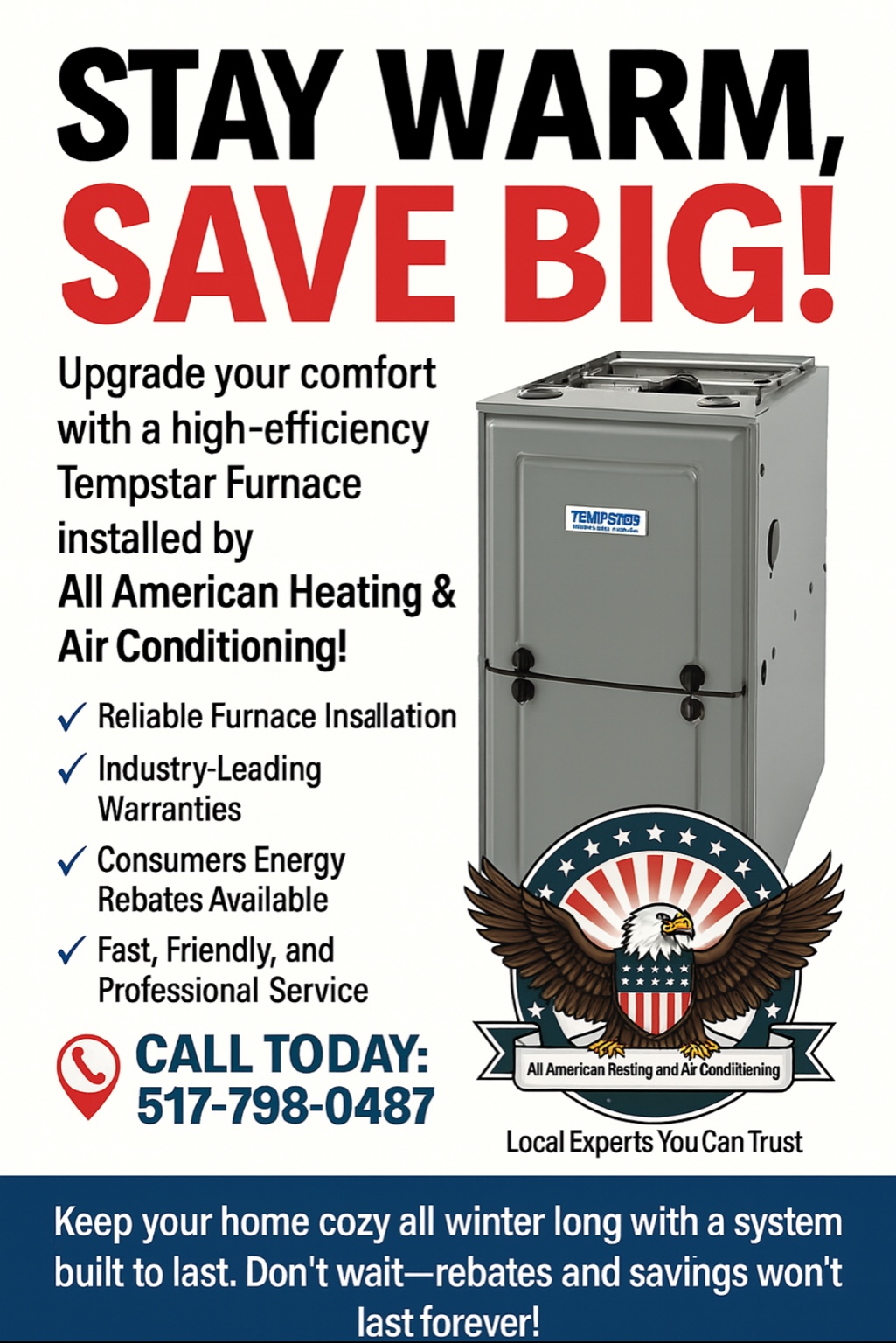Heat Pump vs. Furnace: What’s Best for Your Home?
Choosing between a heat pump and a gas furnace isn’t one‑size‑fits‑all. Climate, utility rates, ductwork, and your comfort preferences all influence the right solution. In Mid‑Michigan, we install both options—often as part of a dual‑fuel system—and we help homeowners understand performance in real‑world conditions, not just on a spec sheet.
A heat pump is an all‑electric system that moves heat rather than generating it. In summer it works like an air conditioner; in winter it reverses direction to bring heat indoors. Modern cold‑climate models can heat effectively even as outdoor temperatures drop, and because they transfer heat, they can deliver impressive efficiency at mild to moderate winter temps. A properly sized heat pump with a variable‑speed compressor offers quiet operation and steady, even comfort.
A gas furnace creates heat by burning natural gas or propane. Today’s high‑efficiency furnaces—often rated 96% AFUE or higher—use condensing technology, sealed combustion, and variable‑speed blowers to provide powerful, reliable warmth. Furnaces excel in the coldest weeks of the year, delivering strong supply‑air temperatures and quick recovery when you raise the thermostat.
Many Michigan homes benefit from a dual‑fuel approach: pair a high‑efficiency heat pump with a gas furnace. The heat pump handles most of the heating season efficiently; when outdoor temperatures drop below an economic balance point (often in the 25–35°F range, depending on energy prices), the system automatically switches to the furnace for lower operating costs and higher supply‑air temperatures. You get the best of both worlds—efficient shoulder‑season heating and robust cold‑weather performance.
Other considerations include ductwork and electrical capacity. Heat pumps and high‑efficiency furnaces prefer well‑sealed, properly sized ducts; high static pressure can shorten equipment life and waste energy. If you’re moving from AC to a heat pump, we’ll verify your electrical service and breaker panel can support the outdoor unit’s requirements. For indoor comfort, look at features like variable‑speed blowers, communicating controls, and smart thermostats that integrate humidity management and learning schedules.
When it’s time to choose, we present clear, good‑better‑best options with transparent pricing. If you want the lowest carbon footprint and efficient cooling plus heating, a cold‑climate heat pump may be ideal. If your priority is the hottest supply air and rock‑solid performance in deep winter, a 96%+ AFUE Tempstar furnace is hard to beat. For many homeowners, a dual‑fuel setup delivers the optimal balance of comfort and operating cost throughout Michigan’s seasons. We’re happy to evaluate your home, explain trade‑offs, and recommend a system tailored to your goals.
